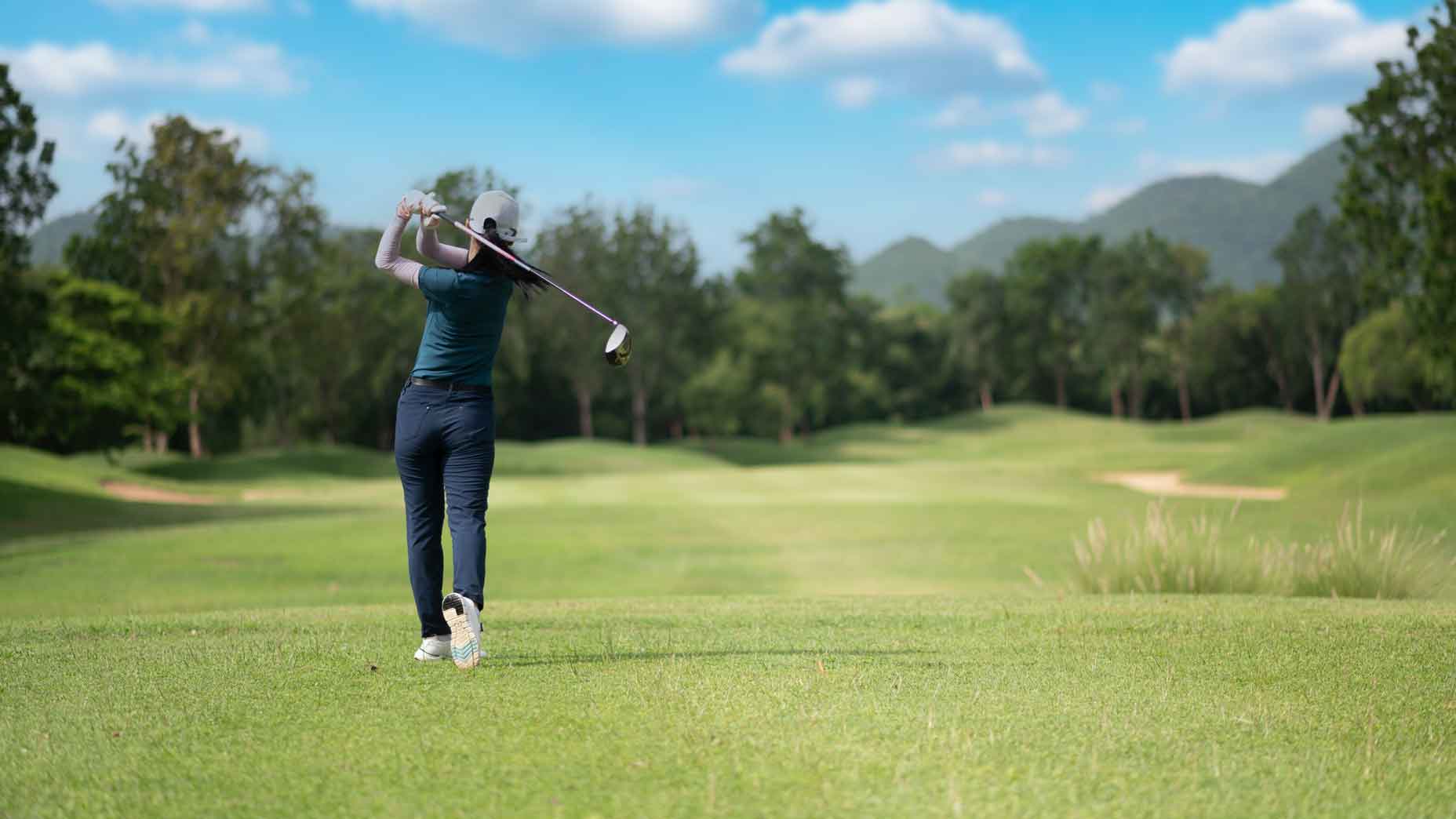Welcome to Shaving Strokes, a new GOLF.com series in which we’re sharing improvements, learnings and takeaways from amateur golfers just like you — including some of the speed bumps and challenges they faced along the way.
There’s a good chance that if you only knew how to consistently make better golf ball contact, your scores would be lower, right?
Of course!
Think about all those shots you spray right off the tee, chunk from the middle of the fairway, or skull when chipping around the greens. If you’re able to eliminate even just a handful of these mishits each round, your scorecard would look much nicer.
Bad ball-strikers make this mistake while shifting their weight. Here’s how to fix itBy: Nick Dimengo
But being a consistently great ball-striker takes work, as it’s not just something that instantly occurs overnight.
To help players learn how to make better golf ball contact, GOLF Top 100 Teacher Tina Tombs has an easy drill to use for the next time you’re at the range — and all you need are your clubs, some balls, and a can of Dr. Scholl’s foot spray (really)!
The drill helps find the bottom of the arc, ensuring your club is engaging with the turf properly as you impact the ball. The video above shows how it works, with more info provided below.
Discover better golf ball contact with this nifty drill
As Tombs shows in the video, she simply uses the foot powder to draw a line on the grass, which establishes the target area for where the bottom of the arc should be.
“I’m going to use this line to help me find the bottom of the arc in my golf swing,” Tombs explains. “I’m going to put the line in the center of my stance, and I’m going to find out where my club is bottoming out.”
Now the goal of the line is not to hit directly on it. Instead, Tombs reminds viewers to hit in front of the line, which will ensure you’re making better contact by getting the clubface squarely on the ball.
Struggling with crisp contact and drop-kicking? Try these 2 quick fixesBy: Jessica Marksbury , Stefanie Shaw
“Sometimes you may hit behind the white line, and sometimes you’ll hit in front,” she adds.
What this drill provides is instant feedback, which is why it’s both easy and effective. Instead of guessing why your ball went in a certain direction, you can simply learn from your divot to better understand what went right or wrong.
“It’s a great awareness drill,” adds Tombs. “You’ll be able to tell if you’re hitting it thin, or high or low on the ball,” Tombs says. “Knowing where that bottom of the arc is, is really important in order to make solid contact.”











